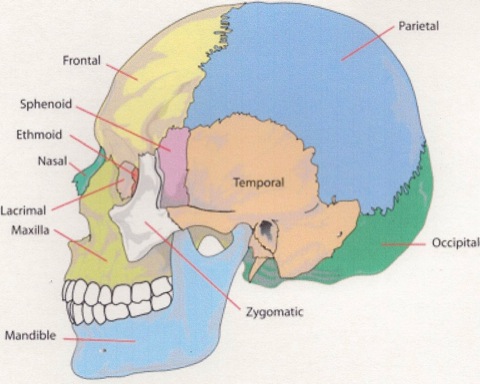Applied Kinesiology (AK) Approach to HELPING YOU WITH HEADACHES—and other HEALTH ISSUES
As you may know, Applied Kinesiologists don’t treat conditions; we treat people. Through muscle testing we can see what IS NOT moving correctly and we get it moving again. When you visit us at the office we assess what needs to be done on an INDIVIDUAL BASIS with each and every patient.
In patients with headaches, It is very common to find that their skull is not moving properly. THAT’S RIGHT—your skull moves! It expands 2.2 millimeters every 10 seconds; according to a landmark study in the Journal of The American Osteopathic Association in 1994.
So you see, your skull is not just a big football helmet. It moves to pump cerebrospinal fluid to nourish every nerve in your body. This is why it is a good idea to come in on a regular basis to make sure all 206 bones in your body are moving properly—including your skull bones.
Just like when you can have a pinched nerve in your back; you can have a pinched nerve in your skull.
Instead of walking around with electrodes strapped to your head (see below), doesn’t it make more sense to stimulate the nerve by un-pinching it—instead of having an electrical device (TENS) doing it artificially?
Below are diagrams of the different skull bones in the human head:


See how the 12 Cranial Nerves (in Roman numerals) control the eyes, ears, nose, neck, jaw (TMJ), heart, lungs, stomach and intestines!? Cranial Nerve X also has a calming effect on your nervous system.
Hopefully, you now understand how getting your Cranial Bones moving properly not just helps with Headaches but also helps you with:
— Neck Pain
— Anxiety Attacks
— Heart Palpitations
— Hearing & Balance Issues
— Breathing and Lung Problems
— Digestive Disorders (GERD, gas, constipation etc)
— Eyesight problems and more
Its not Magic… It is Science properly applied!
Be well,
Dr. Eugene Charles
FDA Approves First Device to Prevent Migraine
Susan Jeffrey
March 11, 2014
The US Food and Drug Administration (FDA) today allowed marketing of the first device for the preventive treatment of migraine headaches (Cefaly, STX-Med).
It is also the first transcutaneous electrical nerve stimulation (TENS) device specifically authorized for use before the onset of pain, the FDA noted in a statement released today.
The device, which resembles a plastic headband worn across the forehead and over the ears, stimulates the trigeminal nerve using a self-adhesive electrode in the center of the forehead. "The user may feel a tingling or massaging sensation where the electrode is applied," the FDA notes. "Cefaly is indicated for patients 18 years of age and older and should only be used once per day for 20 minutes.”
The device is already available in Europe, as well as several South American and Middle Eastern countries and Canada.





